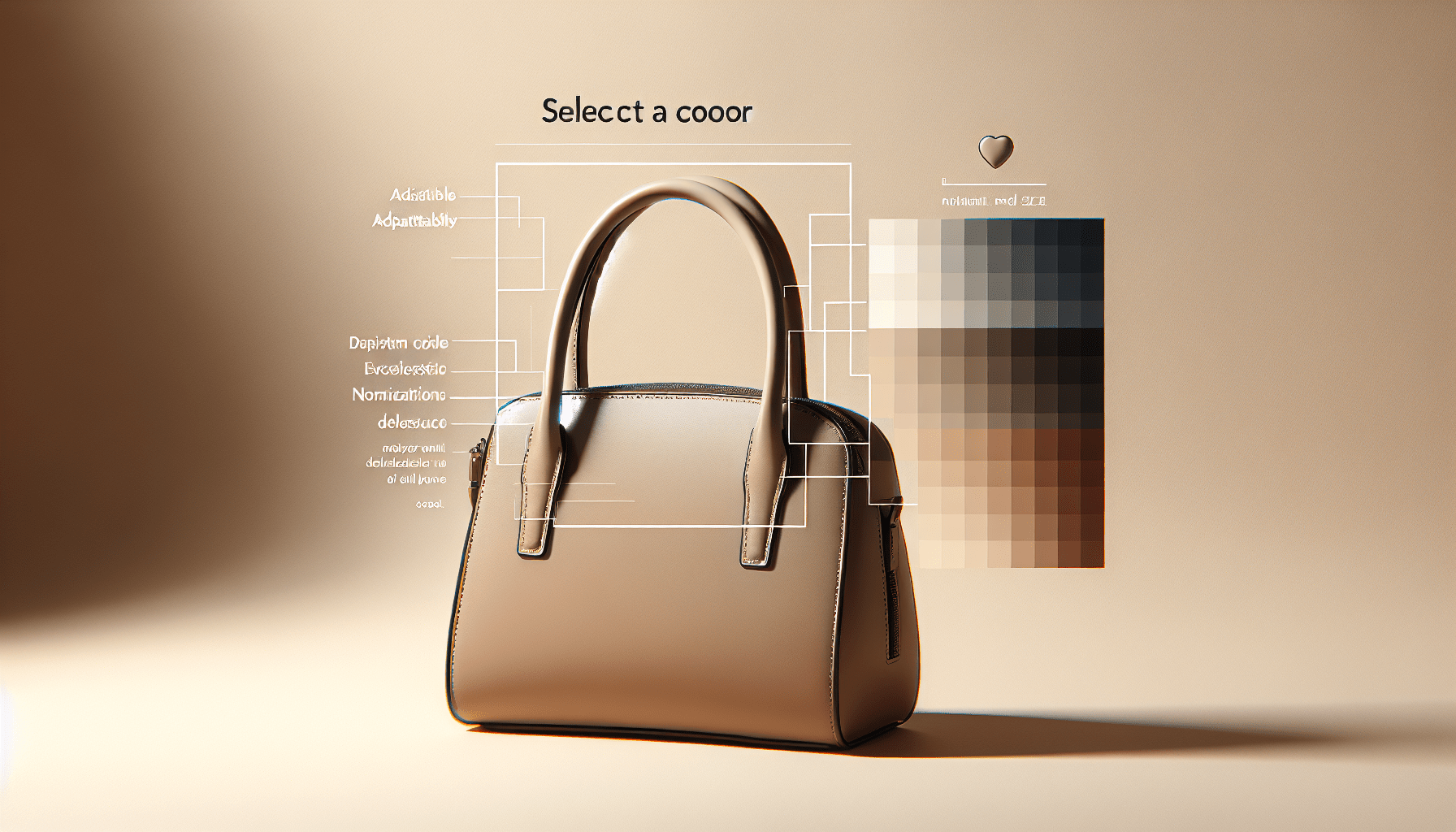Can I Have A Purse And A Carry On
So, you’re planning your next vacation and you’re busy packing your bags. You start wondering: can I bring both a purse and a carry-on with me? Well, the good news is that you don’t have to choose between fashion and functionality! Many airlines allow you to bring a purse and a carry-on bag on board, giving you the best of both worlds. In this article, we’ll explore the rules and guidelines for bringing both a purse and a carry-on, ensuring you can travel hassle-free and in style. Get ready to jet-set with all your essentials!
1. Size Restrictions
When it comes to traveling, one of the most important things to consider is size restrictions for your luggage. Whether you’re traveling domestically or internationally, airlines have specific regulations in place to ensure that all passengers’ belongings can fit safely and efficiently in the cabin. This article will provide you with a comprehensive guide on the size restrictions for both carry-on bags and purses, as well as tips on how to pack efficiently to maximize your space.
1.1 Carry-On Size Limits
Each airline sets its own carry-on size limits, which differ slightly from one another. Generally, the maximum dimensions for a carry-on bag are around 22 inches long, 14 inches wide, and 9 inches deep. However, it’s important to note that these dimensions can vary, and it’s always recommended to check with your specific airline for their exact size restrictions. Remember that carry-on size limits include both wheels and handles, so make sure to measure your bag accordingly.
1.2 Purse Size Limits
In addition to your carry-on bag, most airlines allow you to bring a personal item such as a purse. The size restrictions for purses are usually more flexible compared to carry-on bags. While there is no set standard for purse dimensions, it’s generally accepted that a purse should be small enough to fit comfortably under the seat in front of you. This means it should be able to fit within approximately 18 inches long, 14 inches wide, and 8 inches deep. As with carry-on bags, it’s always best to check with your airline for their specific purse size limits.
2. Airlines Policies
Understanding the policies of different airlines is crucial when it comes to planning your trip. Each airline has its own guidelines regarding luggage size, weight, and additional fees. Let’s take a look at some of the specific airline regulations to ensure a smooth and hassle-free travel experience.
2.1 Specific Airline Regulations
Different airlines have different rules and regulations when it comes to luggage. It’s essential to be aware of these rules to avoid any unexpected surprises at the airport. Here are the regulations for some popular airlines:
2.1.1 American Airlines
American Airlines allows passengers to bring one carry-on bag and one personal item such as a purse or laptop bag. The carry-on bag should fit within 22 x 14 x 9 inches, while the personal item should fit under the seat in front of you.
2.1.2 Delta Airlines
Delta Airlines also permits one carry-on bag and one personal item. The carry-on bag should not exceed 22 x 14 x 9 inches, and the personal item should fit under the seat in front of you.
2.1.3 United Airlines
United Airlines follows a similar policy, allowing one carry-on bag and one personal item. The dimensions for the carry-on bag should not exceed 22 x 14 x 9 inches, while the personal item should fit under the seat in front of you.
2.2 International Airlines Regulations
If you’re traveling internationally, it’s important to note that the size restrictions for carry-on bags and purses can vary from airline to airline. Some international airlines may have different size limits or additional fees for luggage. Always check with your specific airline or consult their website for up-to-date information on their luggage policies.
3. Personal Baggage Allowance
Understanding your personal baggage allowance is crucial to ensure a stress-free journey. Let’s take a closer look at the allowances for both carry-on bags and personal items.
3.1 Carry-On Allowance
Most airlines allow passengers to bring one carry-on bag on board. This bag is typically stored in the overhead compartment of the aircraft. It’s important to adhere to the size restrictions set by your airline. By packing efficiently and smartly, you can maximize the space available in your carry-on bag.
3.2 Personal Item Allowance
In addition to your carry-on bag, most airlines allow you to bring a personal item such as a purse, laptop bag, or small backpack. This item is typically stored under the seat in front of you. While there are usually no specific size restrictions for personal items, it’s best to keep them compact and easily manageable.
3.3 Exceptions for Travelers with Medical Needs
It’s important to note that some airlines may have exceptions or additional allowances for passengers with medical needs. For example, if you require medical equipment or supplies during your journey, you may be allowed to bring additional items on board. Make sure to inform your airline in advance and provide any necessary documentation to ensure a smooth travel experience.
4. Packing Tips
Efficient packing is key when it comes to fitting all your essentials into your carry-on bag and purse. Here are some packing tips to help you make the most of the limited space available:
4.1 Organizing Essentials in a Carry-On
To maximize space in your carry-on bag, it’s helpful to use packing cubes or organizers. These small, zippered bags help keep your clothes and belongings neatly organized and compressed. Roll your clothes instead of folding them to save space, and consider packing versatile clothing items that can be mixed and matched to create different outfits.
4.2 Maximizing Space in a Purse
When packing your purse, prioritize the essentials. Consider bringing a small wallet, travel-sized toiletries, and any necessary medications. Roll your clothing items and use small, compact accessories to make the most of the limited space. It’s always a good idea to have a lightweight, foldable tote bag as a backup option in case you need additional space during your trip.
4.3 Travel-Sized Toiletries
To comply with airport security regulations and save space, opt for travel-sized toiletries. Many brands offer mini versions of popular products, or you can purchase empty travel-sized bottles and fill them with your favorite products. Remember to pack any liquid items in a clear, resealable bag to ensure a hassle-free experience at the security checkpoint.
5. Choosing the Right Purse and Carry-On
Selecting the right purses and carry-on bags can greatly enhance your travel experience. Here are some options to consider:
5.1 Purse Options
When choosing a purse, consider your personal style and what items you need to carry with you. Some popular options include:
5.1.1 Tote Bags
Tote bags are spacious and versatile, making them a great choice for those who need to carry a bit more. Look for one with multiple compartments and sturdy straps for added convenience and durability.
5.1.2 Shoulder Bags
Shoulder bags are a classic and stylish option. Opt for one with multiple pockets and compartments to keep your belongings organized. Adjustable straps are also a plus, allowing you to find the perfect fit for your comfort.
5.2 Carry-On Options
Your choice of a carry-on bag depends on the type of travel you’ll be doing and your personal preferences. Consider the following options:
5.2.1 Suitcases
Suitcases come in various sizes and designs. Hardshell suitcases are durable and offer additional protection for your belongings, while softshell options are lightweight and more flexible. Choose a suitcase with a telescopic handle and spinner wheels for easy maneuverability.
5.2.2 Backpacks
If you prefer a hands-free option, a backpack can be a practical choice. Look for one with padded straps and multiple compartments for organization. Some backpacks even have a separate laptop compartment, making them ideal for business travelers.
6. Traveling Light vs. Being Prepared
When it comes to traveling, there’s often a debate between traveling light or being prepared for all possibilities. Let’s explore both perspectives:
6.1 Minimalist Traveling
Traveling light can offer many benefits, such as easy maneuverability, quicker security checks, and less stress overall. By packing only the essentials, you can reduce the weight and size of your bags, allowing for a more comfortable travel experience.
6.2 Carrying Extras and Necessities
On the other hand, being prepared for all possibilities can provide peace of mind during your journey. Carrying extras like medication, a change of clothes, and essential documents can help you handle unexpected situations such as flight cancellations or delays. However, it’s important to find a balance and avoid overpacking unnecessary items that can weigh you down.
7. Avoiding Additional Fees
Nobody wants to be surprised by additional fees at the airport. Here are some tips to avoid common baggage-related fees:
7.1 Baggage Fees
Many airlines charge additional fees for checked bags, oversized bags, or exceeding weight limits. By adhering to the size restrictions and weight limits outlined by your airline, you can avoid these fees. If you need to bring extra items, consider pre-purchasing additional baggage allowance to save money compared to paying at the airport.
7.2 Weight Restrictions
To avoid overweight baggage fees, invest in a reliable luggage scale. Weighing your bags before leaving for the airport ensures that you won’t exceed any weight restrictions. If your bag is overweight, consider removing non-essential items or distributing the weight across your carry-on and personal item.
7.3 Pre-Purchasing Extra Allowance
If you know you’ll need to bring extra items with you, it’s often more cost-effective to pre-purchase additional baggage allowance. Most airlines offer the option to add extra weight or additional bags to your reservation at a discounted rate compared to paying for it at the airport. Planning ahead can save you money and hassle.
8. Security Considerations
Ensuring the safety and security of your belongings during your travels is of utmost importance. Here are some security considerations when it comes to your carry-on and purse:
8.1 TSA Guidelines for Carry-Ons
The Transportation Security Administration (TSA) has specific guidelines for carry-on items. Liquids, aerosols, gels, and creams must be in containers of 3.4 ounces (100 milliliters) or less and placed in a quart-sized, clear, resealable bag. The bag should be easily accessible for inspection at the security checkpoint. Additionally, certain items like sharp objects, firearms, and flammable materials are prohibited in carry-on bags. Familiarize yourself with the TSA’s guidelines to ensure a smooth and efficient security screening process.
8.2 Ensuring Safety of Valuables in a Purse
When traveling with a purse, it’s important to take precautions to safeguard your belongings. Keep your purse close to you at all times, preferably in front of your body. Use a bag with sturdy zippers or closures to prevent theft or accidental spills. Consider purchasing a small lock to secure your purse when necessary. It’s also a good idea to keep valuable items, such as passports or electronics, in a separate pouch or compartment within your purse for added protection.
9. Simplicity in Travel
Traveling with just a carry-on bag and a purse can provide a sense of simplicity during your journey. Let’s explore the benefits of this minimalist approach:
9.1 Only Taking the Essentials
With limited space available, packing only the essentials encourages you to carefully consider what you truly need for your trip. This mindset can help eliminate the stress and overwhelm of overpacking, allowing you to focus on enjoying your travel experience.
9.2 Benefits of a Carry-On and Purse Combination
Traveling with a carry-on bag and a purse offers convenience and flexibility. Your carry-on bag can store larger items and clothing, while your purse keeps your essentials easily accessible during your journey. Having these two bags allows you to navigate through airports and other travel situations with ease, making your trip more enjoyable.
10. Best Practices and Tips
To wrap up this comprehensive guide, here are some additional best practices and tips to keep in mind:
10.1 Using Packing Cubes for Organization
Investing in a set of packing cubes can greatly simplify the organization of your belongings. Assigning each cube for specific items, such as shirts, pants, or undergarments, makes it easier to find what you need without unpacking your entire bag.
10.2 Rolling Clothes for Maximum Space
Rather than folding your clothes, consider rolling them. This technique not only saves space but also reduces wrinkles. Rolling your clothes tightly and fitting them together like a puzzle can maximize the available space in your carry-on bag and purse.
10.3 Having a Versatile Purse
Choose a purse that can adapt to different situations. Look for one with multiple carrying options, such as detachable straps or handles that can transform it into a crossbody bag or a clutch. Having a versatile purse eliminates the need to carry multiple bags and allows you to adapt to various travel scenarios.
In conclusion, understanding the size restrictions, airlines’ policies, and personal baggage allowances is crucial for a smooth and stress-free travel experience. By packing efficiently, choosing the right bags, and adhering to security guidelines, you can travel with ease and simplicity. Whether you prefer minimalist traveling or being prepared for any situation, finding the perfect balance enables you to make the most of your journey. Bon voyage!



